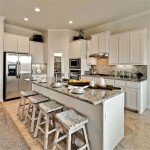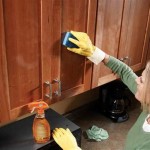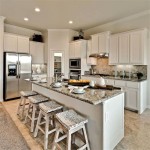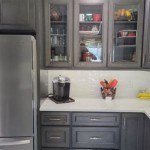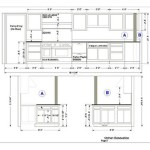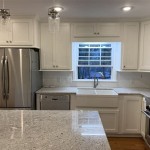Why Are My Kitchen Cabinets Pulling Away From The Wall?
Kitchen cabinets are integral to the functionality and aesthetics of a home. They provide essential storage space, contribute to the overall design, and, when properly installed, remain securely attached to the wall for many years. However, instances arise where kitchen cabinets begin to pull away from the wall. This separation not only poses a safety hazard but also indicates underlying structural or installation problems that require attention. Understanding the reasons behind this phenomenon is critical for effective remediation and preventing further damage. This article will explore the common causes of cabinets detaching from the wall, providing insights into the forces at play and potential solutions.
Inadequate Installation Practices
One of the primary reasons for kitchen cabinets separating from the wall is improper installation. The installation process is crucial for ensuring long-term stability and load-bearing capacity. Several specific errors during installation can contribute to this problem.
The most fundamental requirement for secure cabinet installation is anchoring the cabinets directly to wall studs. Wall studs are the vertical framing members within the wall that provide structural support. Cabinets should be fastened to these studs using appropriately sized screws. Ignoring the studs and merely attaching cabinets to drywall or plasterboard results in a weak connection that cannot withstand the weight of the cabinets and their contents. The drywall or plasterboard lacks sufficient strength to provide adequate support, and the weight will eventually cause the fasteners to pull through, leading to separation.
Finding the studs requires the use of a stud finder, an electronic device that detects the presence of studs behind the wall surface. Studs are typically spaced 16 or 24 inches apart, center to center. Failure to accurately locate studs and properly align the cabinet mounting brackets with them is a common error. Even if studs are located, using screws that are too short will also result in a weak connection. Screws should be long enough to penetrate the stud deeply, ensuring a firm grip. A minimum screw length of 2.5 to 3 inches is generally recommended for securely fastening cabinets to studs.
Another crucial aspect of installation is ensuring that the cabinets are level and plumb. Level cabinets distribute weight evenly, preventing undue stress on any single point of attachment. If cabinets are installed out of level, the weight of the contents will shift, placing excessive strain on the higher side. This can lead to the fasteners pulling out or the cabinet frame warping over time. Shimming is the process of using thin pieces of wood or plastic to correct any unevenness in the wall or floor. Improper shimming can exacerbate the problem by creating gaps between the cabinet and the wall, reducing the surface area of contact and weakening the connection.
Furthermore, the type of screws used is a critical factor. Using drywall screws for cabinet installation is a common mistake. Drywall screws are designed for attaching drywall to studs, not for bearing heavy loads. They are brittle and prone to snapping under stress. Cabinet installation requires specifically designed cabinet screws, which are hardened and have a coarse thread pattern that provides a stronger grip in wood. These screws are designed to withstand shear forces and tensile loads, ensuring a secure and lasting connection.
The weight distribution within the cabinets also plays a role. Overloading cabinets, especially upper cabinets, can significantly increase the stress on the mounting hardware. Heavier items should be placed in lower cabinets whenever possible to minimize the load on the wall-mounted units. Distributing the weight evenly within the cabinets is also essential. Concentrating heavy items on one side of a cabinet can create an imbalance that causes the cabinet to lean and pull away from the wall. Addressing these installation-related issues is crucial for preventing cabinet separation and ensuring the long-term stability of kitchen storage.
Structural Issues Within the Wall
Beyond installation problems, structural issues within the wall itself can contribute to kitchen cabinets pulling away. The integrity of the wall's framing and the materials used in its construction directly impact the stability of anything attached to it.
One common structural problem is compromised studs. Wood studs can be weakened by moisture damage, insect infestation (such as termites or carpenter ants), or rot. Any of these factors can reduce the load-bearing capacity of the studs, making them unable to adequately support the weight of the cabinets. Moisture damage can occur due to leaks from plumbing fixtures, roof leaks, or inadequate ventilation. Insect infestations can gradually eat away at the wood, weakening its structure. Rot, caused by prolonged exposure to moisture, can similarly degrade the wood's integrity. Inspecting the studs for signs of damage is crucial before and during cabinet installation.
Another structural issue is the presence of plumbing or electrical wiring within the wall cavity. If plumbing or electrical conduits have been improperly installed or altered, they may weaken the studs or restrict the placement of fasteners. Cutting into studs to accommodate plumbing or electrical work can significantly reduce their strength. Furthermore, if the wiring or plumbing is not properly secured, it can vibrate or move, putting stress on the cabinet fasteners and contributing to the separation. Ensuring that plumbing and electrical systems are properly installed and do not compromise the structural integrity of the wall is essential.
Wall deflection, or bowing, can also contribute to cabinets pulling away. Wall deflection can occur due to inadequate framing, settling of the foundation, or excessive loads on the wall. If the wall is not perfectly straight, it can put stress on the cabinet fasteners, gradually causing them to loosen or pull out. This is particularly problematic with upper cabinets, which are more susceptible to the effects of wall deflection. Using shims to compensate for wall deflection can help, but it is important to address the underlying structural issue to prevent further movement.
The type of wall construction also influences the stability of the cabinets. Older homes may have walls constructed of lath and plaster, which is less structurally sound than drywall. Lath and plaster walls are more prone to cracking and crumbling, making it difficult to securely fasten cabinets to them. Special techniques and fasteners may be required to properly attach cabinets to lath and plaster walls. Similarly, walls constructed of lightweight materials or with insufficient framing may not be able to adequately support the weight of the cabinets. Identifying any structural weaknesses in the wall and addressing them before installing cabinets is crucial for preventing future problems.
Furthermore, significant renovations or alterations to the wall can weaken its structure. Removing or altering load-bearing walls without proper support can cause the wall to shift or settle, putting stress on the cabinet fasteners. Installing new windows or doors can also weaken the wall if the framing is not properly reinforced. Ensuring that any renovations are done properly and do not compromise the structural integrity of the wall is essential for maintaining the stability of the cabinets.
Environmental Factors and Material Degradation
Environmental factors and the inherent degradation of building materials over time can also contribute to cabinets separating from the wall. These factors exert continuous stress on the cabinets and their mounting hardware.
Changes in humidity and temperature can cause wood to expand and contract. This expansion and contraction can loosen the cabinet fasteners over time. High humidity levels can also promote the growth of mold and mildew, which can weaken the wood and compromise its structural integrity. Maintaining a stable humidity level in the kitchen is important for preventing these problems. This can be achieved through proper ventilation and the use of dehumidifiers if necessary. Also, temperature fluctuations can create stress on the fasteners, especially if the cabinets are made of different materials with varying expansion and contraction rates.
Water leaks and spills are particularly damaging to kitchen cabinets. Water can seep into the joints and seams of the cabinets, causing them to swell and warp. This warping can put stress on the fasteners and eventually cause them to pull out. Water damage can also lead to rot, which weakens the wood and makes it more susceptible to damage. Promptly addressing any water leaks or spills is essential for preventing long-term damage to the cabinets. A good kitchen cabinet maintenance routine can go a long way in preventing wood rot.
The age of the cabinets themselves can also be a factor. Over time, the glue that holds the cabinet components together can weaken, and the wood can become brittle and prone to cracking. This can compromise the structural integrity of the cabinets and make them more likely to pull away from the wall. Inspecting the cabinets for signs of wear and tear is important. If the cabinets are showing signs of significant deterioration, it may be necessary to replace them.
Corrosion of the fasteners is another consideration. Metal fasteners can corrode over time, especially in humid environments. Corrosion weakens the fasteners and reduces their ability to hold the cabinets securely to the wall. Using corrosion-resistant fasteners, such as stainless steel or galvanized screws, can help to prevent this problem. Regularly inspecting the fasteners for signs of corrosion and replacing them as needed is also important.
Finally, the quality of the materials used in the construction of the cabinets plays a role. Cabinets made of low-quality materials are more susceptible to damage from environmental factors. Particleboard and MDF (medium-density fiberboard) are more prone to swelling and warping than solid wood. Investing in high-quality cabinets made of durable materials is a worthwhile investment in the long run. When installing kitchen cabinets, the quality and materials matter.

Cabinets Pulling Away From Wall Doityourself Com Community Forums

Baseboards Pulling Away From Wall

Cabinet Pulling Away From Wall Tiktok Search

Blind Corner Cabinets Step By Guide On How To Install

Kitchen Cabinets 9 Easy Repairs Diy Family Handyman

6 Features That Are Dating Your Kitchen And How To Fix Them Bob Vila

Repair Cabinet Falling From The Wall

Cabinet Hardware Placement Guide

How To Remove Kitchen Cabinets Budget Dumpster

How To Remove Kitchen Cabinets Budget Dumpster
Related Posts

